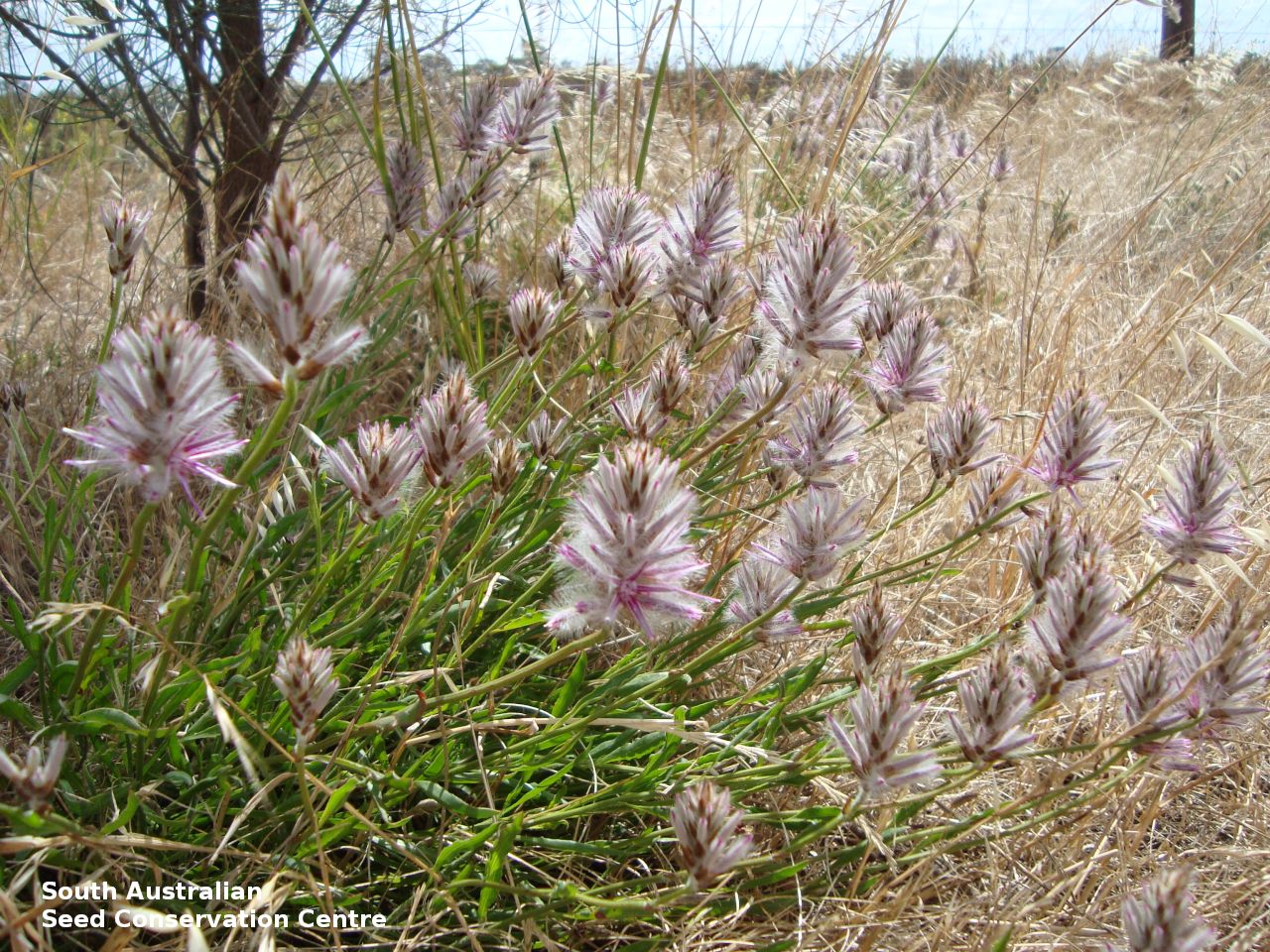
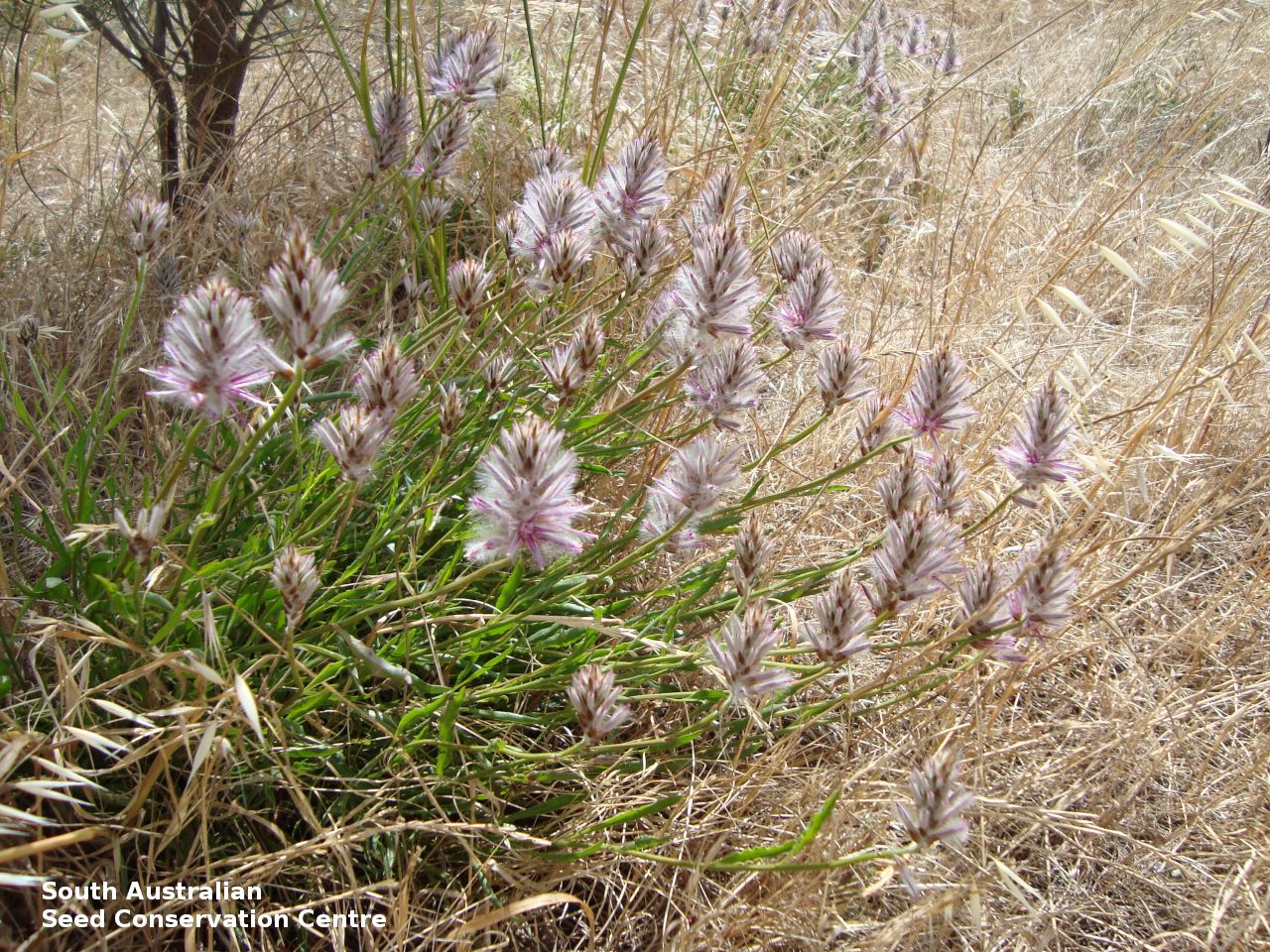
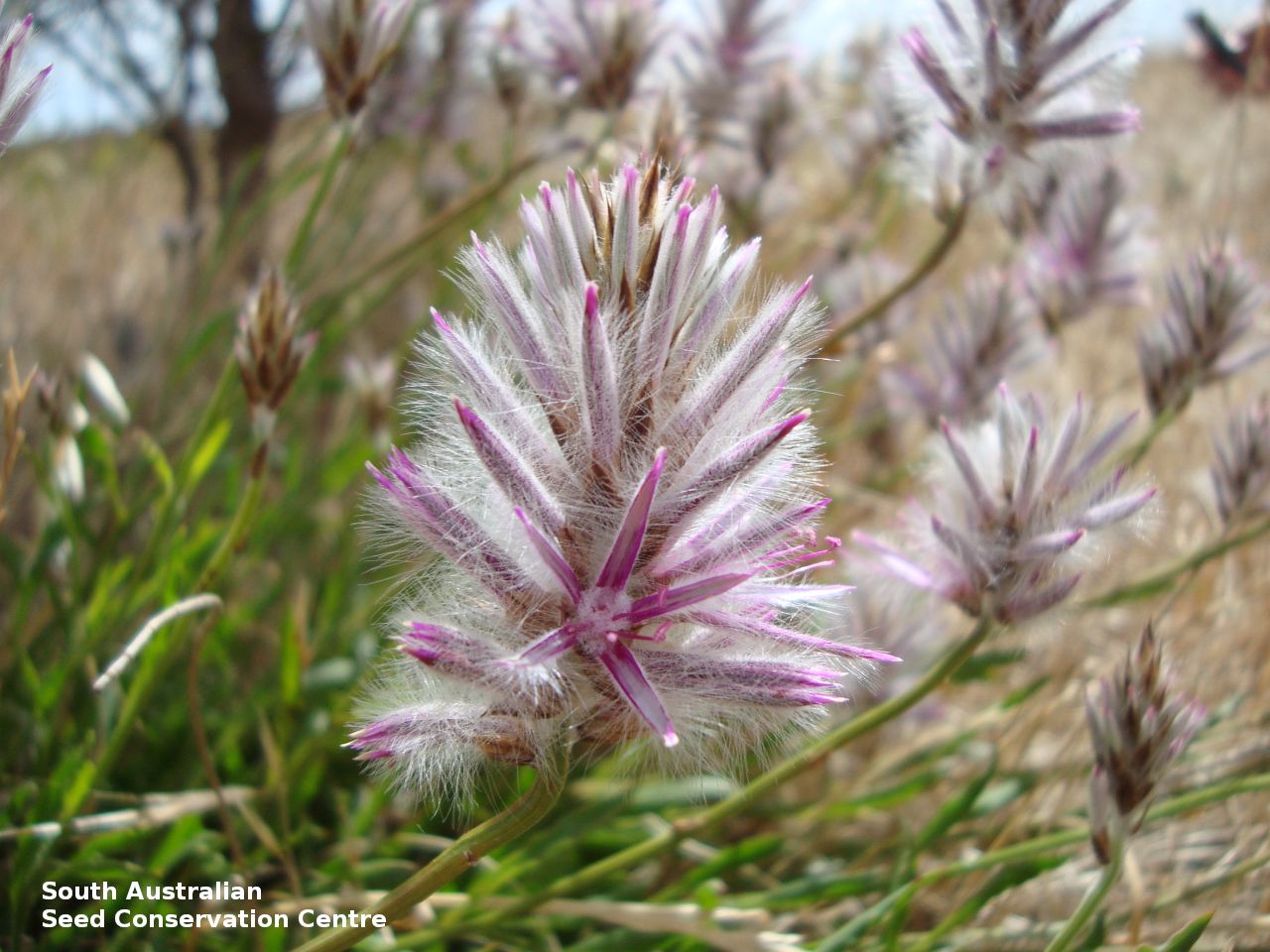
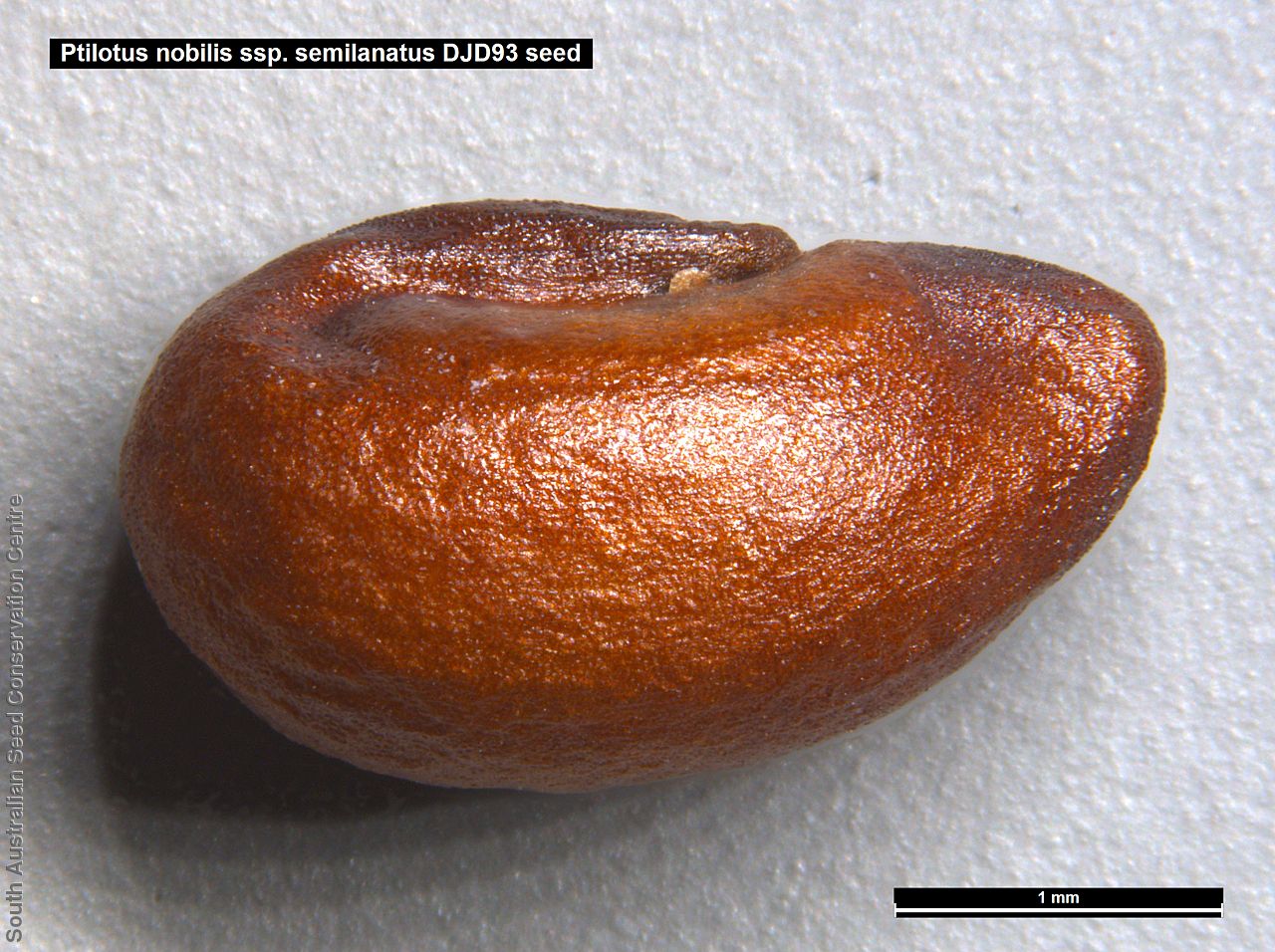
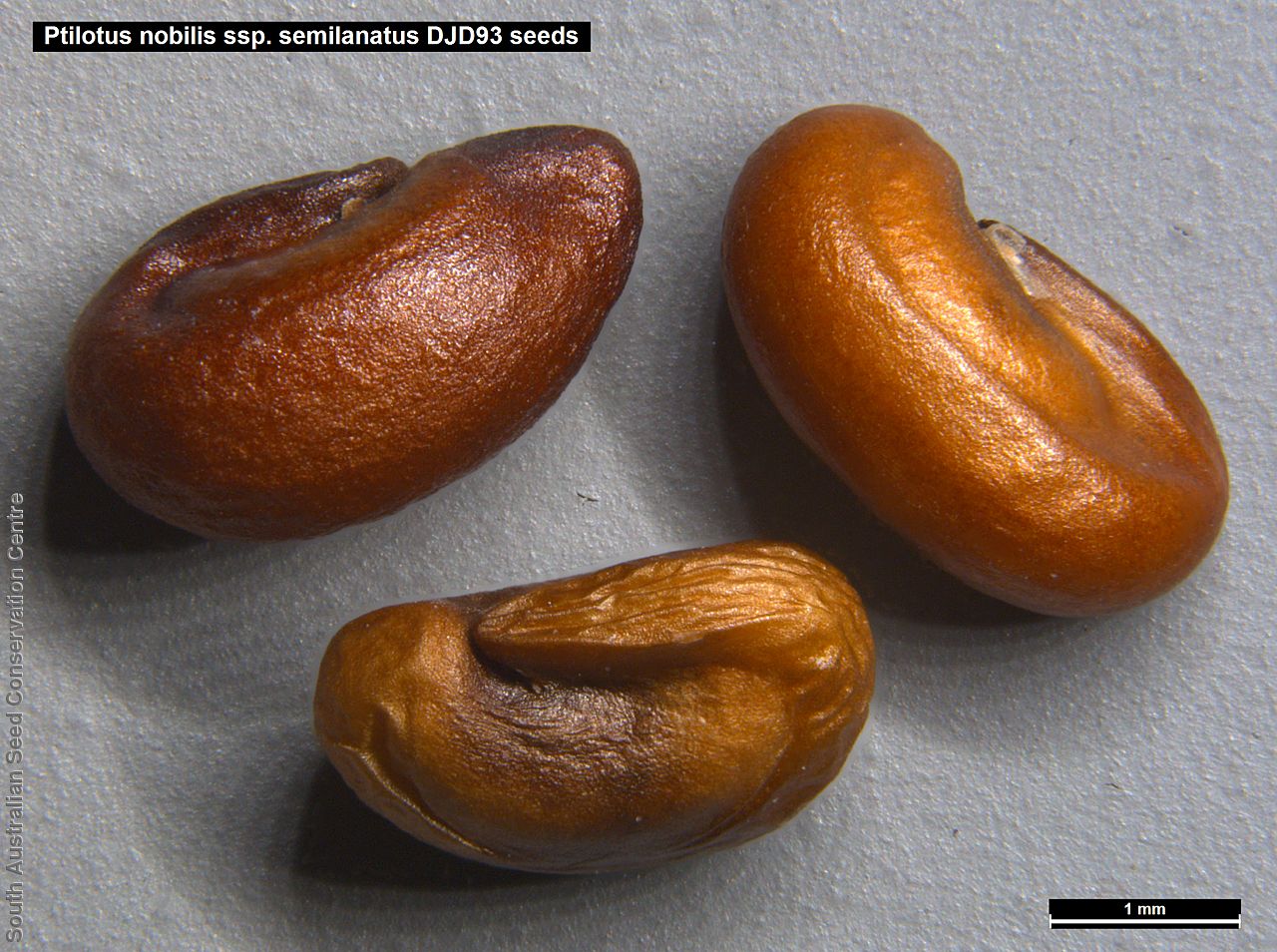
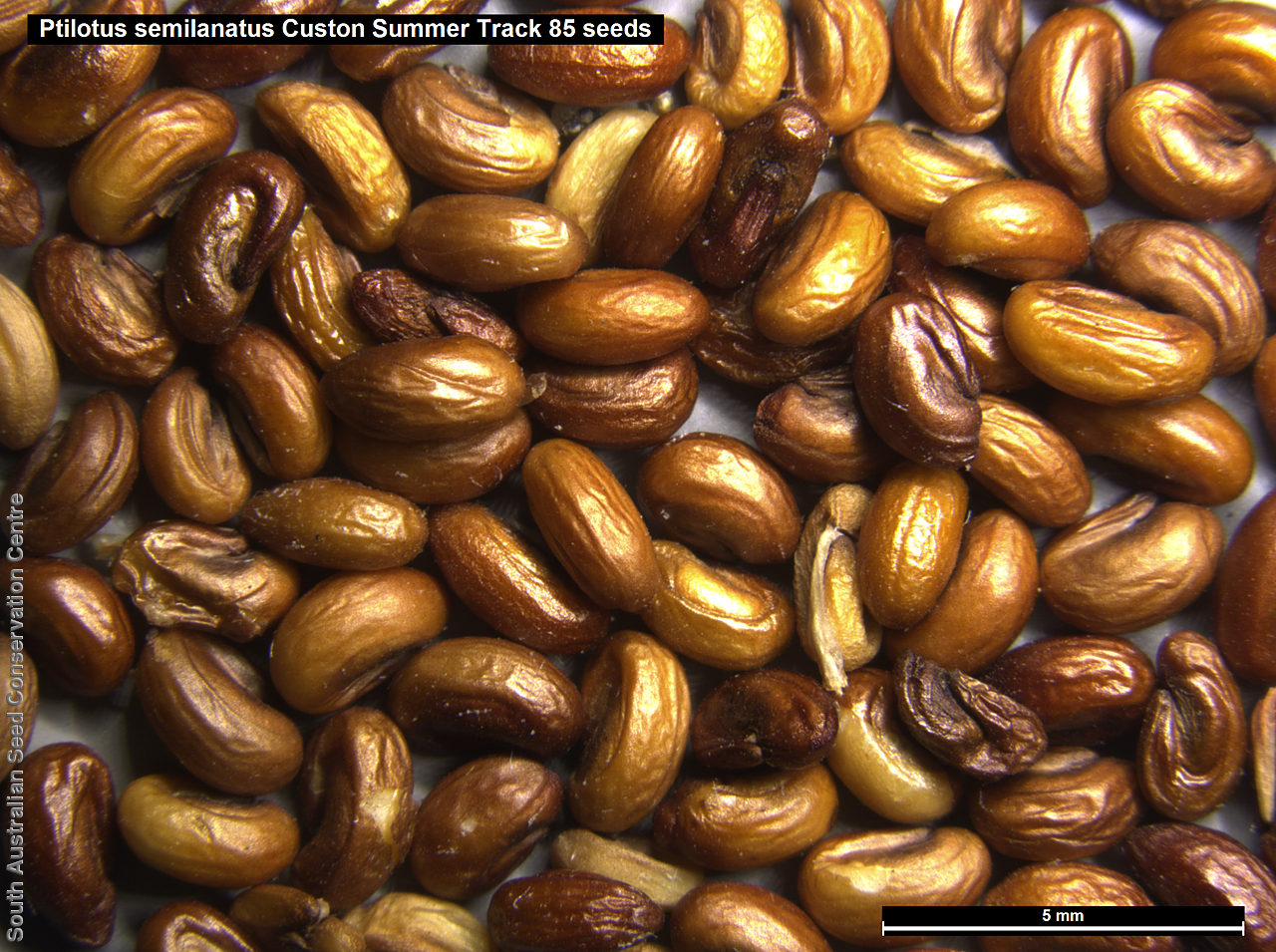
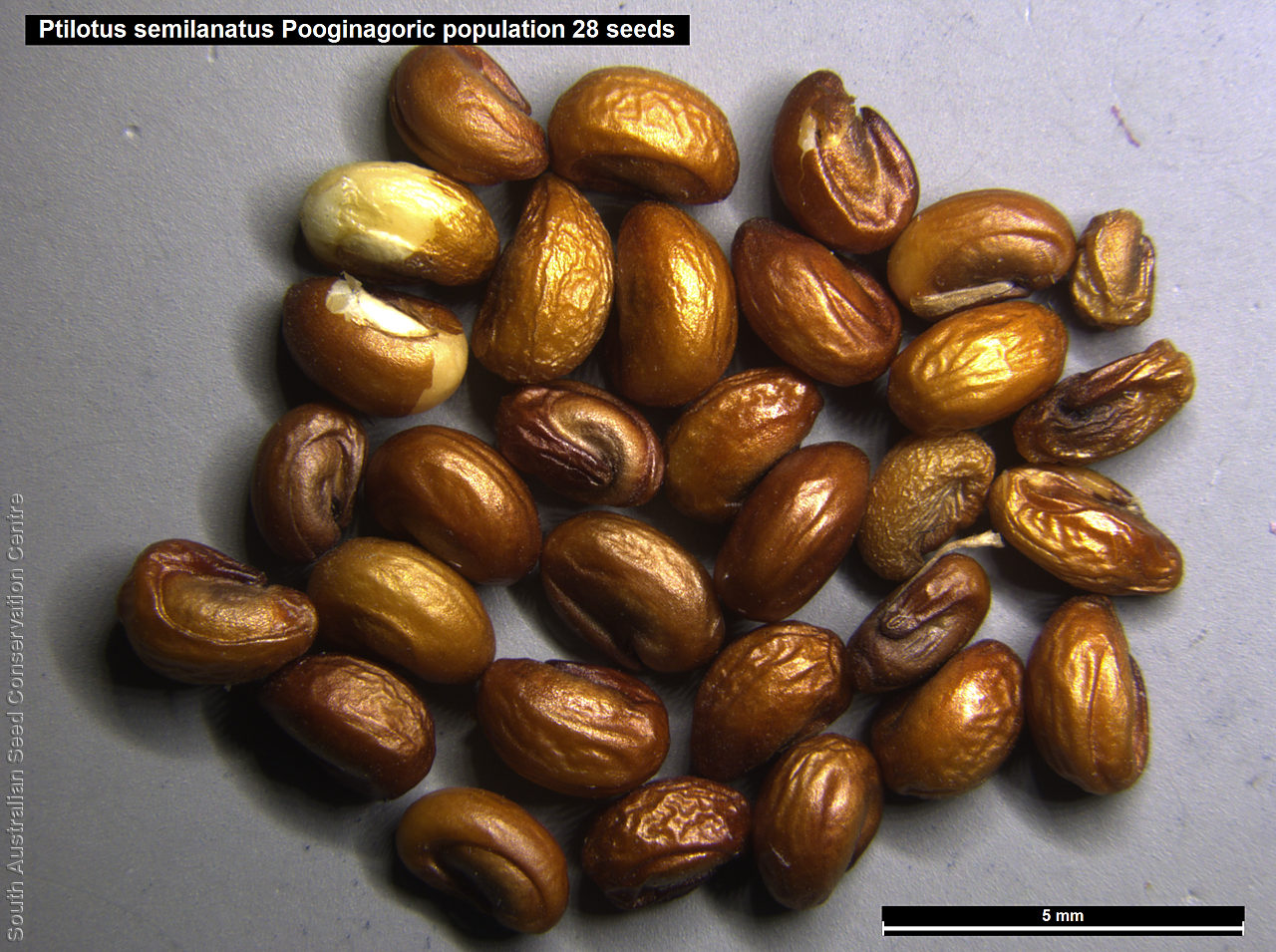


Botanical art
Prior names
Ptilotus nobilis ssp. semilanatus
Ptilotus exaltatus var. semilanatus
Trichinium pulchellum
Trichinium setigerum
Trichinium semilanatum
Common names
Hairy Fox-tail
Perennial Lamb's Tails
Hairy Tails
Etymology
Ptilotus from the Greek 'ptilotos' meaning feathered or winged; referring to the hairy flowers. Nobilis means notable or showy; alluding to the species large and showy flower-spike. Semilanatus from the Latin 'semi' meaning half and 'lanata' meaning woolly.
Distribution and status
Found in the lower South-east in South Australia, growing on loamy or clayey soils. Also found in Queensland, New South Wales and Victoria. Native. Very rare in South Australia. Common in the other states.
Herbarium region: South Eastern
NRM region: South East
AVH map: SA distribution map (external link)
Plant description
Prostrate or weakly ascending herb to 30 cm high. Leaves oblanceolate, those at base to 8 cm long and 15 mm wide, glabrous or remaining lightly pubescent, margins usually plane. Flower-spike hemispherical to ovoid, to 5 cm wide, with consistently purple flowers. Perianth 13–22 mm long, ovary with hairs usually confined to keels near apex. Flowering in October to January. This subspecies is distinguished from the other subspecies by the inflorescences being 2–5 cm long (5–20 cm long in subsp. nobilis), with the apex truncate or obtuse (conical in subsp. nobilis), the tepals 14–17 mm long (17–24 mm long in subsp. nobilis), and the linear or narrowly-spathulate leaves 2–6(–10) mm wide, with undulate margins (10–40 mm wide, margins straight in subsp. nobilis). It shares the narrow basal leaves with long attenuate bases and the usually hemispherical or ovoid inflorescences, with subsp. angustifolius, but differs from this subsp. in the shorter perianths and styles. Fruits are ovoid head containing numerous long papery and hairy fruits, each containing one seed Seeds are orange-brown reinform seed to 3 mm long and 2 mm wide. Seed embryo type is peripheral.
Seed collection and propagation
Collect seeds between December and February. Be very careful when collecting this species as the fruits contain fine hairs that may cause an allergic reaction for some people. Collect the fruit heads when dried to a pale straw colour. Each fruit should come off the head easily when fingers are rubbed up the stem. Collect more fruits than required as not all fruits will have a viable seed. Be very careful when cleaning this species as the fruits contain fine hairs that may cause an allergic reaction for some people. To clean, rub the fruit heads gently to dislodge the seed at the base of each fruit. Use a sieve to separate the unwanted material. Store the seeds with a desiccant such as dried silica beads or dry rice, in an air tight container in a cool and dry place. From one collection, the seed viability was low, at 36%. Seeds are non-dormant, viable seed should germinate readily.
| Location | No. of seeds (weight grams) | Number of plants | Date collected | Collection number Collection location | Date stored | % Viability | Storage temperature |
|---|---|---|---|---|---|---|---|
| MSB | 2,300 (30.8 g) | 18 | 18-Jan-2005 | DJD92 South Eastern | |||
| BGA | 1,900 (18.41 g) | 30 | 18-Jan-2005 | DJD93 South Eastern | 28-Mar-2006 | 36% | +5°C, -18°C |
Number of plants: This is the number of plants from which the seeds were collected.
Collection location: The Herbarium of South Australia's region name.
% Viability: Percentage of filled healthy seeds determined by a cut test or x-ray.